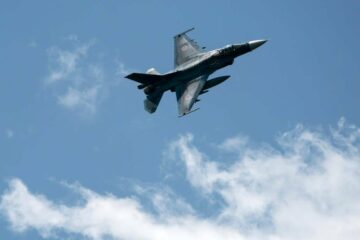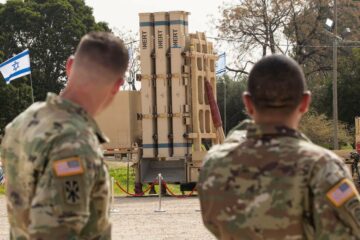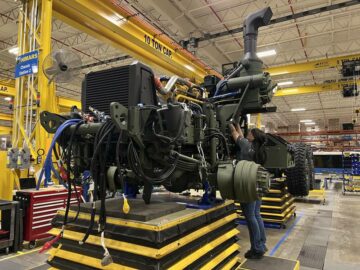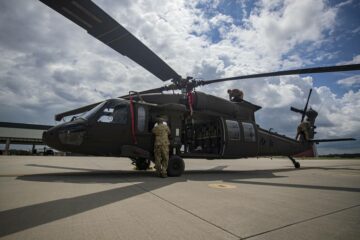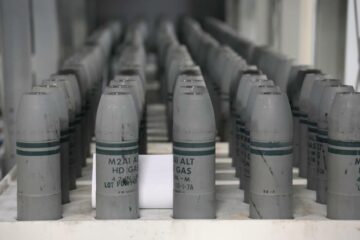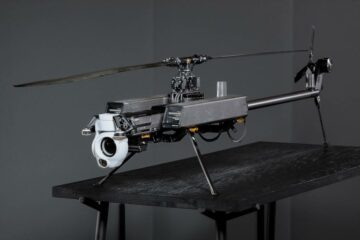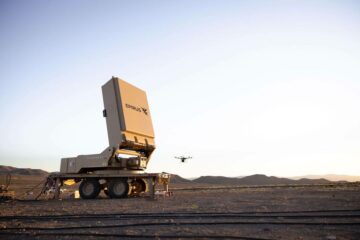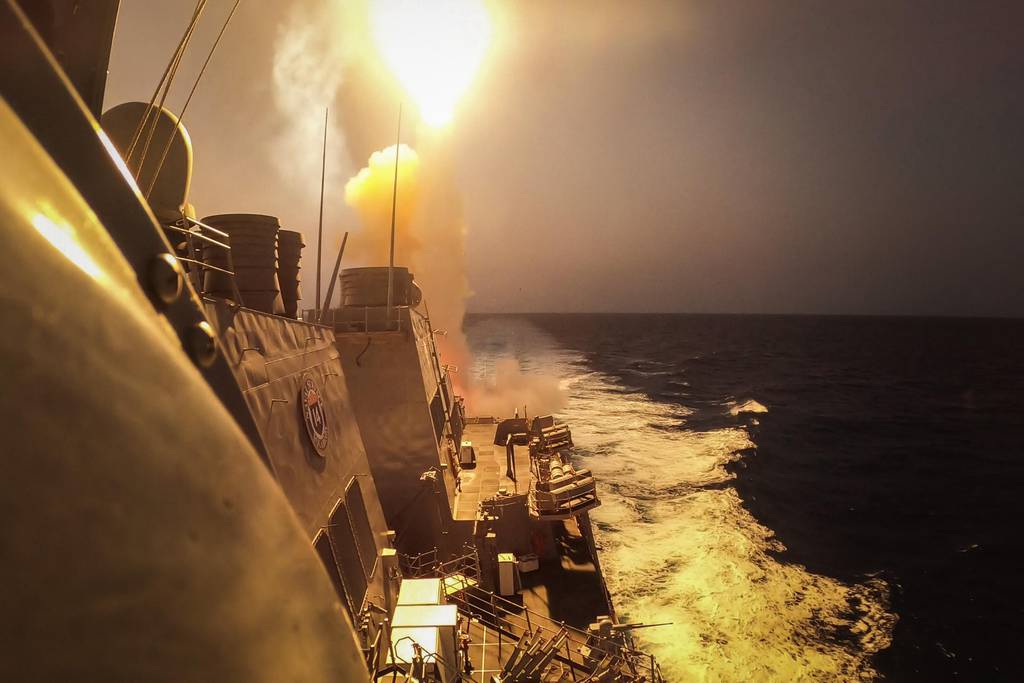
The U.S. Navy will postpone most of its planned development and purchases of large unmanned systems and next-generation ships and planes in fiscal 2025, citing spending caps.
The Navy in its FY25 budget request seeks six ships instead of the previously planned seven in the proposal — including one attack submarine, compared to the planned two — and will trim its research and development budget by 2.7% and military construction spending by 26.1%.
The service said it wants to instead prioritize current operations and personnel, along with small unmanned systems and the Pentagon-led Replicator program, which could yield results for the fleet on a much shorter timeline.
The Department of the Navy is seeking $257.6 billion for FY25 for the Navy and Marine Corps, up 0.7% from the FY24 request Congress has not passed more than five months into the fiscal year. The Defense Department’s overall spending plan is capped at a 1% increase compared to FY24 under the Fiscal Responsibility Act that dictates FY24 and FY25 spending levels.
Under Secretary Erik Raven told reporters Friday the department fully funded the sea-based portions of the nuclear deterrence triad, including the Columbia-class ballistic submarine, the Trident nuclear missile and the TACAMO command and control aircraft system — leaving insufficient money to cover other shipbuilding and modernization needs.
“Our guidance directs us to take risk in future modernization when there are hard choices to be made,” Raven told reporters ahead of the budget’s release.
“So if you look at F/A-XX, or the other X [next-generation] programs, we knowingly took risk in the schedule for development of those programs in order to prioritize those key investments — whether that’s readiness, or investing in our people, or undersea, to make sure that we make those programs whole,” he added.
‘Re-phased’ modernization plans
The Navy today is quickly using up missiles and ship readiness in the Middle East, as Houthi forces ashore in Yemen continue to lob missiles and attack drones at warships, merchant ships and other targets throughout the region.
As a result, the Navy is already facing a bill it hadn’t anticipated when building the FY25 budget. Raven said the Navy, through the Office of the Secretary of Defense, would likely ask Congress for a supplemental spending bill sometime in FY25 because “the ‘25 budget that is being presented does not anticipate the current expenditure of missiles in the Red Sea or those additional operations costs.”
But the Navy is also worried about the next few years. It considers the 2020s to be a decade of concern, due to experts believing 2027 could be a likely time for China to invade Taiwan.
Because of the cost associated with ongoing operations and the push to be ready for a tougher fight within the next few years, the Navy postponed a number of big-ticket items that wouldn’t come to fruition this decade and doubled down on smaller systems that could.
The Navy’s next-generation fighter, the F/A-XX, is one example. Whereas the FY24 budget sought $1.5 billion to develop and design the plane and its enabling technology, the Navy in FY25 only wants a third of that.
Rear Adm. Ben Reynolds, the deputy assistant secretary of the Navy for budget, said that was one of the “hard choices” resulting from the limited top line. The delay also gives industry more time to mature technology, he added, saying the Navy is “still committed” to this piece of its Next-Generation Air Dominance family of systems.
The Navy asked for $586.9 million for SSN(X) next-generation attack submarine design and development efforts, up slightly from the $544.7 million it requested in FY24.
The sea service also seeks $102.7 million for its DDG(X) next-generation destroyer, down from FY24′s $187.4 million request.
Budget documents released Monday do not address potential resulting delays.
The Navy previously said it would buy its first Large Unmanned Surface Vessel — a key part of its distributed maritime operations concept, serving as remote missile launchers to supplement manned ships operating elsewhere in theater — in FY25, followed by two in FY26 and three each in FY27 and FY28.
That procurement schedule is now pushed back two years, budget books show.
Reynolds characterized it as “experiencing … technical difficulty,” making the program an easy target for “rephasing,” or delaying to later in the five-year defense spending program when the Pentagon won’t be subject to spending caps.
The Extra Large Unmanned Underwater Vessel, which would lay mines and conduct other covert missions, was meant to begin one-a-year procurement in FY26 and appears to still be on track despite Reynolds also referring to “rephasing” its funding.
But, even as some bigger unmanned programs are delayed, Reynolds said the Navy is moving quickly with some of its smaller unmanned systems. Several are moving from research and development into procurement, and from fabrication into testing, he said. Both the Medium USV and Medium UUV are both funded in the budget and advancing toward fielding, he added.
Reynolds also noted the Navy will fund its contribution to the OSD-led Replicator program, which intends to flood the Indo-Pacific theater with thousands of drones to deter a war or help win it. However, he declined to detail what that money would buy, and the Navy did not disclose how much it will put towards the effort.
Raven noted the budget funds the newly formed Disruptive Capabilities Office, which will rapidly bring innovative technologies, including but not limited to unmanned systems, into the fleet.
“We continue to see unmanned as a feature of so many important naval capabilities, and we are making those investments in this budget,” the undersecretary said.
Deferred buys, early decommissionings
The Navy asks for $32.4 billion to buy six ships in the FY25 budget request, compared to the seven it previously planned for the year.
These include two Arleigh Burke-class destroyers, one Constellation-class frigate, one Virginia-class attack submarine, one San Antonio-class amphibious transport dock, and one landing ship medium.
This is one fewer submarine than previously planned, and the budget nixes a T-AGOS ocean surveillance ship the Navy previously planned to buy in FY25.
It does, though, add in the San Antonio-class LPD, a shipbuilding line the Pentagon had tried to truncate two years ago.
The continuation of the LPD line allows the Navy to adhere to a law that requires the Navy to maintain a fleet of 31 amphibious ships to support Marine Corps operations, Raven said.
That the landing ship medium program will begin acquisition in FY25 is welcome news for the Marine Corps, which says it needs those ships to move small groups of Marines within a theater — from shore to shore to conduct missions while evading enemy detection. The program was previously slated for a FY22 start, but was delayed due to lack of funding.
Because these ships are already three years late, the Marine Corps was eyeing a number of other ship types in the fleet that could support Marine Corps maneuver. Many of those, however, are on the chopping block in FY25.
Reynolds said the Navy will request to retire 10 ships before the end of their planned service life, including two Independence-variant LCSs; the four oldest Expeditionary Fast Transports; an Expeditionary Transfer Dock the Marines could leverage; and one Whidbey Island-class amphibious dock landing ship that counts towards the 31-amphib fleet.
Reynolds told reporters these 10 ships would each require “a substantial amount of funding to get to the requirements, to get to the modernization, the lethality, that they need to be part of the fight.”
Due to these and other planned retirements, the fleet will decline to 287 ships in FY25, compared to 293 today.
The budget also postpones the Navy’s plans to buy its next aircraft carriers. It’s still building and paying for the future Enterprise and Doris Miller, hulls 80 and 81, that were put on contract in a two-ship buy in 2019.
Reynolds confirmed the Navy is delaying the next carrier, CVN-82, from a planned FY28 buy to FY30.
Other procurement and readiness
The Navy also intends to spend $16.2 billion to buy 75 manned and unmanned aircraft.
This includes 13 F-35B and 13 F-35C Joint Strike Fighters, 27 Multi-Engine Advanced Training System trainers, 19 CH-53K heavy lift helicopters for the Marine Corps and three MQ-25 Stingray unmanned carrier-based refueling aircraft.
The Marine Corps would spend $4.2 billion for procurement under the budget request, to cover ground vehicles, weapons and more.
The budget requests $6.6 billion for Navy weapons procurement, down slightly from FY24′s historic high of $6.9 billion.
The budget also includes $227 million to support the weapons industrial base, in an effort to increase missile production and strengthen the suppliers of critical components.
The Navy asked for $380 million for these efforts in the FY24 budget.
Raven previously told reporters the Navy intends to sign multiyear procurement contracts for four key weapons programs: the Standard Missile, the Naval Strike Missile, the Long Range Anti-Ship Missile and the Advanced Medium-Range Air-to-Air Missile.
While Congress approved these in the defense authorization bill for FY24, the Navy still doesn’t have the money to sign those contracts. The FY25 plan assumes those contracts are in place and that the hundreds of millions in investment dollars to increase supplier output is taking effect.
One key munition program does face a budget cut and a delay. The Conventional Prompt Strike, the Navy’s portion of the hypersonic missile program alongside the Army, is being pushed back as the test and development program is behind schedule, Reynolds said. The Army, too, is delaying the procurement.
Despite the delay, the Navy is devoting $904 million to the program.
The FY25 budget also includes $2.8 billion for dry dock repairs and upgrades at the four public ship repair yards for nuclear-powered aircraft carriers and submarines, under the Shipyard Infrastructure Optimization Program. And it includes $407 million for a similar modernization and optimization effort at the Fleet Readiness Centers that maintain aircraft.
These initiatives are meant to “increase ready players on the field,” one of Chief of Naval Operations Adm. Lisa Franchetti’s calls to action since taking over as the Navy’s top officer in November.
Megan Eckstein is the naval warfare reporter at Defense News. She has covered military news since 2009, with a focus on U.S. Navy and Marine Corps operations, acquisition programs and budgets. She has reported from four geographic fleets and is happiest when she’s filing stories from a ship. Megan is a University of Maryland alumna.
- SEO Powered Content & PR Distribution. Get Amplified Today.
- PlatoData.Network Vertical Generative Ai. Empower Yourself. Access Here.
- PlatoAiStream. Web3 Intelligence. Knowledge Amplified. Access Here.
- PlatoESG. Carbon, CleanTech, Energy, Environment, Solar, Waste Management. Access Here.
- PlatoHealth. Biotech and Clinical Trials Intelligence. Access Here.
- Source: https://www.defensenews.com/naval/2024/03/11/navy-postpones-several-modernization-programs-to-pay-for-operations/
- :has
- :is
- :not
- $2.8 billion
- $UP
- 1
- 10
- 101
- 11
- 13
- 16
- 19
- 2%
- 2009
- 2015
- 2019
- 2023
- 2024
- 2025
- 23
- 26
- 27
- 2nd
- 31
- 4
- 5
- 6
- 7
- 70
- 75
- 8
- 80
- 9
- a
- About
- acquisition
- Act
- Action
- add
- added
- Additional
- address
- adhere
- advanced
- ago
- ahead
- AIR
- air-to-air
- aircraft
- allows
- along
- alongside
- already
- also
- amount
- an
- and
- anticipate
- Anticipated
- appears
- approved
- ARE
- Army
- AS
- ask
- asked
- Assistant
- associated
- assumes
- At
- attached
- attack
- authorization
- aviation
- b
- back
- base
- Battle
- BE
- because
- before
- begin
- behind
- being
- believing
- ben
- bigger
- Bill
- Billion
- Block
- Books
- both
- bring
- budget
- Budgets
- Building
- but
- buy
- Buys
- by
- Calls
- capabilities
- capped
- caps
- carriers
- Center
- Centers
- characterized
- chief
- China
- choices
- chopping
- Chopping Block
- Christopher
- citing
- class
- combat
- come
- Communication
- compared
- complex
- components
- concept
- Conduct
- CONFIRMED
- Congress
- considers
- construction
- continuation
- continue
- contract
- contracts
- contribution
- control
- conventional
- corps
- Cost
- Costs
- could
- counts
- cover
- covered
- critical
- Current
- Cut
- cuts
- decade
- Decline
- Defense
- delay
- Delayed
- delays
- Department
- department of defense
- deputy
- Design
- Despite
- detail
- Detection
- develop
- Development
- dictates
- DID
- Difficulty
- directs
- Disclose
- disruptive
- distributed
- do
- Dock
- documents
- does
- Doesn’t
- dollars
- Dominance
- doubled
- down
- Drones
- dry
- due
- during
- each
- Early
- East
- easy
- effect
- effort
- efforts
- elsewhere
- enabling
- end
- Enterprise
- erik
- example
- Exercise
- experts
- extra
- Face
- facing
- false
- family
- FAST
- Feature
- Federal
- few
- fewer
- fight
- fighters
- File
- Filing
- First
- Fiscal
- five
- FLEET
- flood
- Focus
- followed
- For
- Forces
- formation
- formed
- four
- Friday
- from
- fully
- fund
- funded
- funding
- funds
- future
- geographic
- get
- gives
- grim
- Ground
- Group
- Group’s
- guidance
- had
- Hard
- Have
- he
- heavy
- helicopters
- help
- High
- historic
- How
- However
- HTTPS
- Hundreds
- hundreds of millions
- if
- Iis
- image
- images
- important
- improvements
- in
- include
- includes
- Including
- Increase
- industrial
- industry
- Infrastructure
- initiatives
- innovative
- innovative technologies
- inside
- Inside Look
- instead
- insufficient
- integrated
- intends
- into
- Invade
- investing
- investment
- Investments
- IT
- items
- ITS
- joint
- jpg
- Key
- knowingly
- Lack
- landing
- large
- Late
- later
- Law
- lay
- LCS
- Leads
- leaving
- levels
- Leverage
- Life
- lightning
- likely
- Limited
- Line
- Lockheed Martin
- Long
- Look
- made
- maintain
- make
- Making
- many
- Marine
- Maritime
- Martin
- Maryland
- Mass
- mature
- meant
- medium
- Megan
- Merchant
- Middle
- Middle East
- Military
- Miller
- million
- millions
- mines
- missiles
- missions
- modernization
- Monday
- money
- months
- more
- most
- move
- moving
- much
- Multimedia
- multiyear
- Near
- Need
- needs
- news
- next
- next-generation
- noted
- November
- now
- nuclear
- number
- ocean
- of
- Office
- Officer
- oldest
- on
- ONE
- ongoing
- operating
- Operations
- optimization
- or
- order
- Other
- our
- output
- over
- overall
- part
- participates
- passed
- Pay
- paying
- pentagon
- People
- Personnel
- photo
- piece
- Place
- plan
- plane
- Planes
- planned
- plans
- plato
- Plato Data Intelligence
- PlatoData
- players
- portion
- portions
- potential
- presented
- previously
- Prioritize
- Problem
- procurement
- Production
- Program
- Programs
- proposal
- provided
- public
- purchases
- Push
- pushed
- put
- quickly
- range
- rapidly
- Readiness
- ready
- Red
- referring
- Refueling
- region
- release
- released
- remote
- rendering
- repair
- repairs
- Reported
- reporter
- Reports
- request
- requested
- requests
- require
- Requirements
- requires
- research
- research and development
- responsibility
- result
- resulting
- Results
- Risk
- s
- Said
- San
- saying
- says
- schedule
- SEA
- secretary
- see
- seeking
- Seeks
- sept
- service
- serving
- seven
- several
- she
- ships
- show
- sign
- similar
- since
- SIX
- slightly
- small
- smaller
- So
- some
- sought
- special
- specialist
- spend
- Spending
- standard
- start
- station
- Still
- Stories
- Strengthen
- strike
- subject
- substantial
- Super
- supplement
- supplier
- suppliers
- support
- sure
- Surface
- surveillance
- system
- Systems
- Taiwan
- Take
- taking
- Target
- targets
- Technical
- Technologies
- Technology
- test
- Testing
- than
- that
- The
- The Chopping Block
- The Future
- Theater
- their
- There.
- These
- they
- Third
- this
- those
- though?
- thousands
- three
- Through
- throughout
- time
- timeline
- to
- today
- told
- too
- took
- top
- toward
- towards
- track
- Training
- transfer
- transit
- transport
- tried
- true
- two
- types
- u.s.
- U.S. Navy
- under
- underwater
- university
- University of Maryland
- upgrades
- us
- using
- Vehicles
- Vessel
- vessels
- via
- Video
- Videos
- wants
- war
- was
- we
- Weapons
- weigh
- welcome
- were
- What
- when
- whereas
- whether
- which
- while
- whole
- will
- win
- with
- within
- worried
- would
- X
- year
- years
- Yield
- you
- zephyrnet


